The Karnataka High Court recently told BBMP officials that poor roads are giving a very bad name to Bengaluru. The court was hearing a PIL related to potholes. The issue of poor road maintenance has dominated the local news space for years now. But what is the root cause of this frustrating situation?
In earlier articles, we explored how some areas of Bengaluru manage to have good roads without potholes, and how it was about maintaining proper drains and ensuring regular maintenance. We then explored what BBMP’s own guidelines say about maintaining drains and how much the guidelines are followed on the ground, if at all.
We now look at what the BBMP guidelines say about road surface maintenance. The guidelines laid out by the K N Shivashankara Rao committee in 2009 identified not only proper procedures in road laying but also the importance of administrative processes in ensuring durable and quality roads.
Read more: How is it that roads in Electronics City have no potholes?
Accurate measurements, audits essential — for proper road maintenance
To gauge whether a road surface is being laid properly, the committee recommends taking measurements of cores before and after the construction of the road. Cores are sections cut from the road layers, to check the material composition, quantity of bitumen and thickness of the newly-laid road. Cores have to be taken at grid points of 10m length in straight sections and of 5m length in curves, as recommended by the Indian Roads Congress (IRC). This procedure should also be followed for works like silt removal.
BBMP has said it has a quality control wing and empanelled quality control labs for materials testing. The quality control wing is supposed to be made up of Executive, Assistant Executive and Assistant Engineers. The labs are to be equipped for testing cement, sand, metal, bitumen, bituminous mix, etc. Engineers on the field are expected to make use of this lab to verify the quality of work.
Ashwin Mahesh, urbanist and CEO, MapUnity, however, says the issue is the lack of an independent regulator for road quality – “We have an executing agency whose work is not subject to any standards and regulation. BBMP tries to get around this by pretending that the contractors are doing the work, and it is itself the overseeing agency. But that’s not true. Whether done by itself or through contractors, it is BBMP that is legally responsible for its works. Therefore, BBMP cannot be the institution that certifies the work. That has to be the work of an independent Urban Services Regulator.”
The role of Road History Register
One of the main guidelines from the committee was to maintain a history register for every road. This register specifies the length and width of the road along with details like the nature of the surface, drainage, kerb openings, culverts etc. Periodical repairs undertaken, maintenance and upgradation done for the surface have to be recorded in the history register. The details of the register should be made available to the public online. The committee recommended making the history register part of the process of road works by requiring that any passage of bills should happen after an audit of the history register.
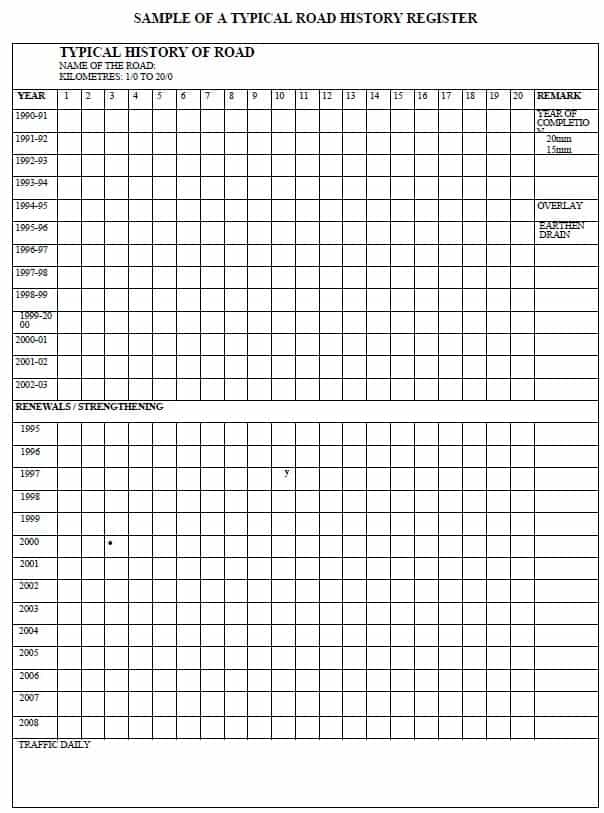
BBMP maintains road history sheets at the ward level. A sample road history sheet can be seen below.
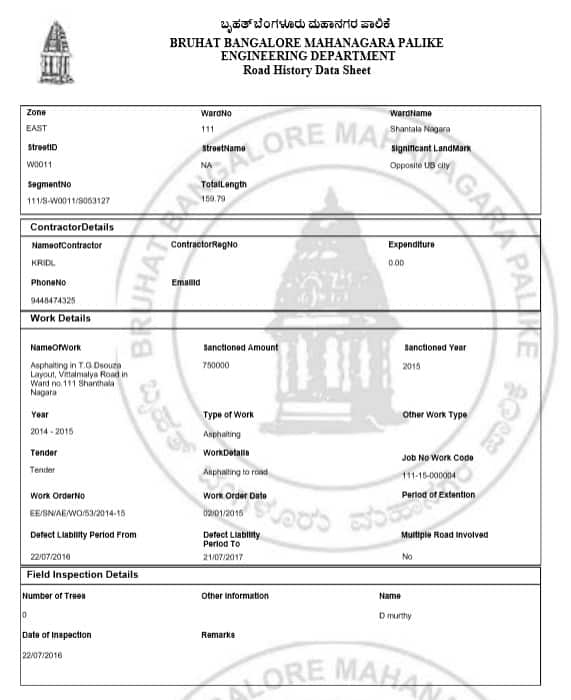
Some of the old road history documents can be seen on OpenCity, the open data platform, but could not be found online in BBMP’s website. BBMP’s Road History software is now hidden behind a login and password. There have also been complaints about the amount of information that BBMP has been willing to make public through these registers.
Ashwin says it is deliberate withholding of information. There have been instances where citizen activists used the RTI mechanism to take BBMP to task. But given the recent closure of the RTI cell, citizens wanting to obtain information to track roadworks don’t have it easy.
“BBMP needs to consult citizens to understand what (road history) structure citizens understand and work with that. Information makes sense only if it is in a form that can be understood.”
Ashwin Mahesh
Read more: Managing drains: How BBMP ignores its own guidelines
Road cutting — a ubiquitous problem
The committee strongly recommends prohibiting any road-cutting that is not approved by BBMP. They also identify the need for strict enforcement by assigning responsibilities to concerned officers of each area. Those attempting to cut or encroach upon a road should face legal action, and their tools and equipment seized. These guidelines are as per IRC paper (98-1997) on utilities.
On the ground, however, road-cutting by both private entities, residents as well as commercial organisations like telecom firms, and utility agencies like BWSSB continues without any restraint. The main reasons are laying sewer or water pipelines or phone/internet lines.
While most road-cuts are covered with concrete, many are left as is leading to further wearing out of the road surface. As much as better enforcement is needed from BBMP, it is important that residents also restore the roads as well as they can when they cut roads.
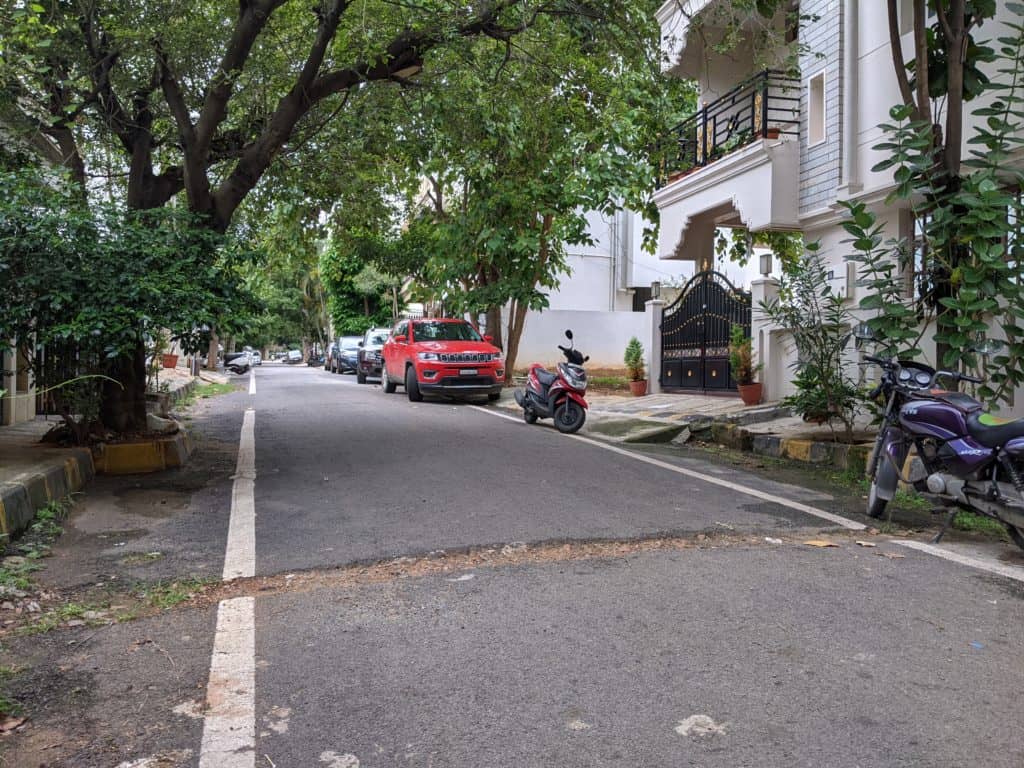
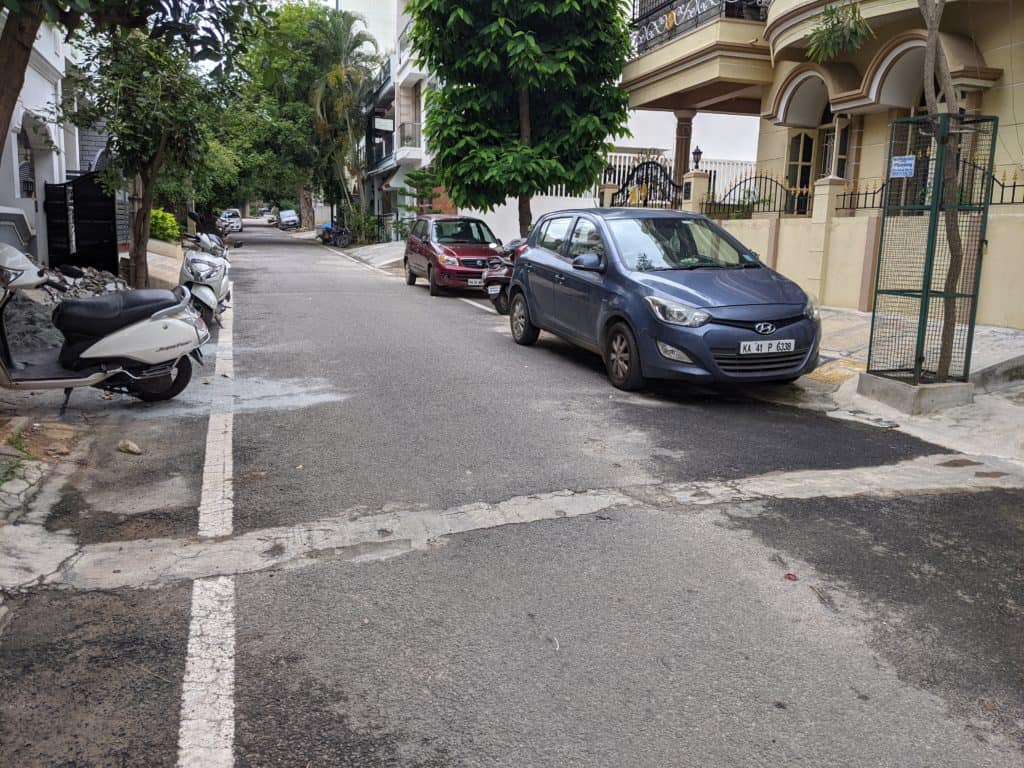
Coordination among utility bodies
One of the most important recommendations from the report is to ensure better coordination among the various service providers like BWSSB, BESCOM, BSNL, BDA, and private cable operators.
According to the report, the existing Road Opening and Restoration (ROR) protocol between BBMP and BWSSB needs to be widened to cover domestic sewage and water connections. However, as per recent updates, since 2016 BWSSB has been paying BBMP to restore the sections instead of restoring it themselves. This restoration, however, does not cover road cuts done by residents to access the main sewage or water line.
The committee also recommends that after the budget is approved for the improvement of a road, BBMP calls a meeting with other service providers and get their programs for the next 5 years for that road. Only once this is examined should the road-work be taken up and once done, no opening of the road should be permitted except for minor repairs.
None of this has reduced the blame games over who is responsible for fixing bad roads. In the case of the recent death of 65-year-old Khurshid Ahmed in an accident caused by poor road conditions, BBMP passed the buck to BDA which blamed BWSSB. The good news, in this case, is that the road is getting fixed because of the PM’s visit. The bad news is that BWSSB’s work is not yet done and the roads will get dug up again soon.
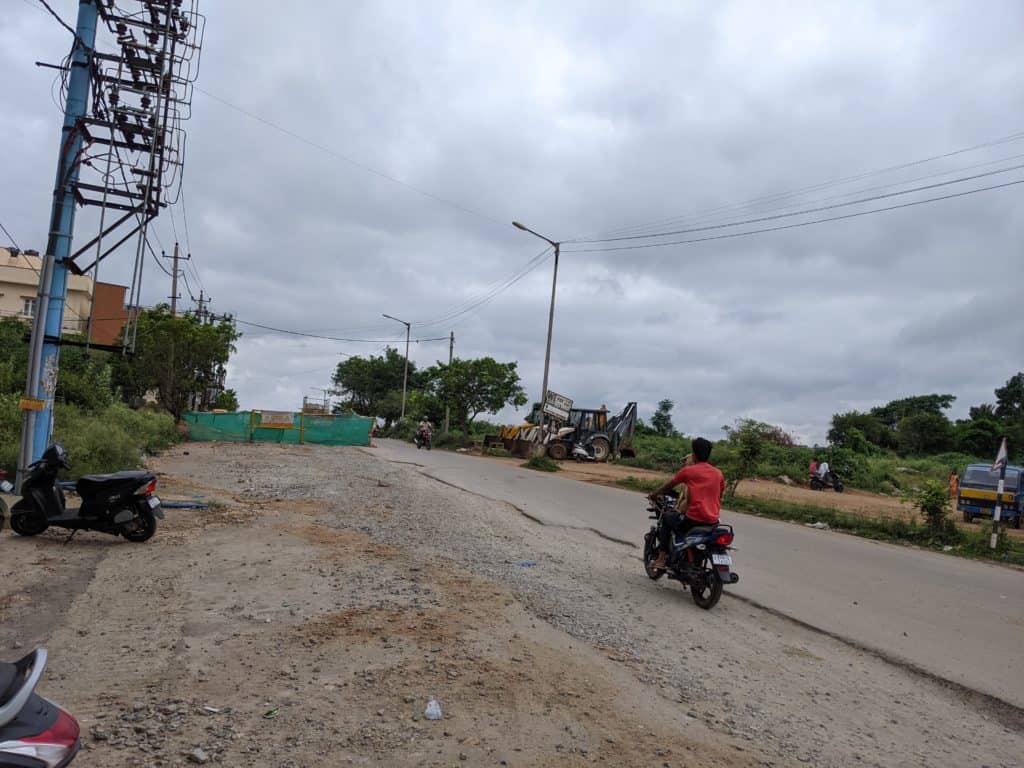
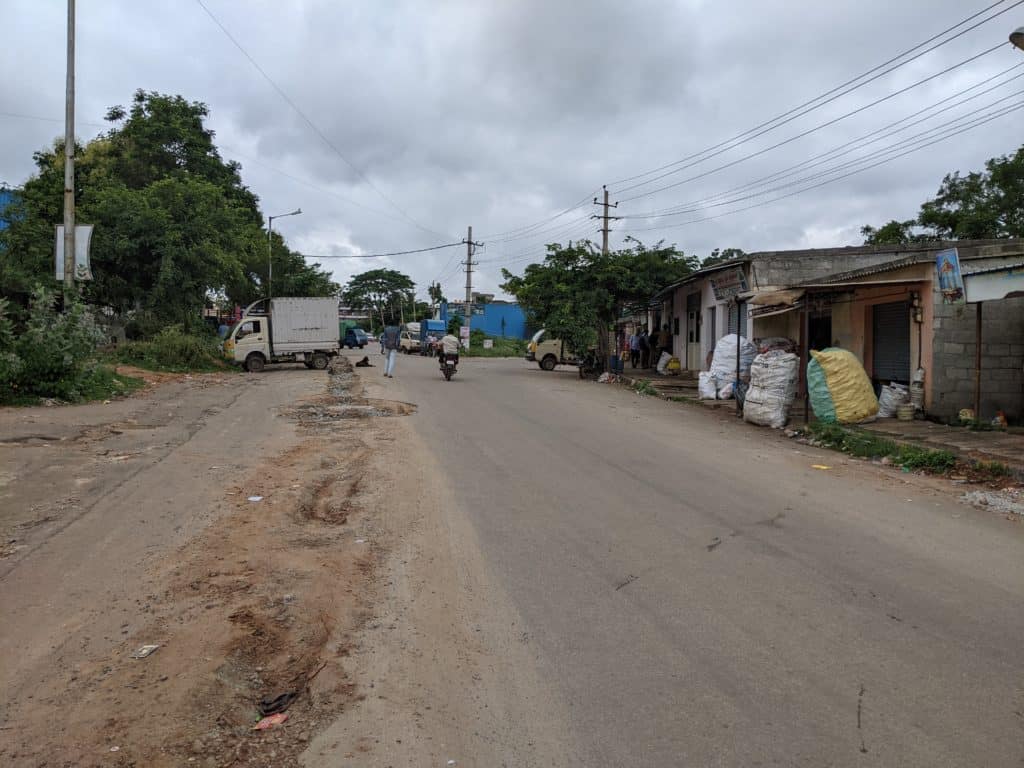
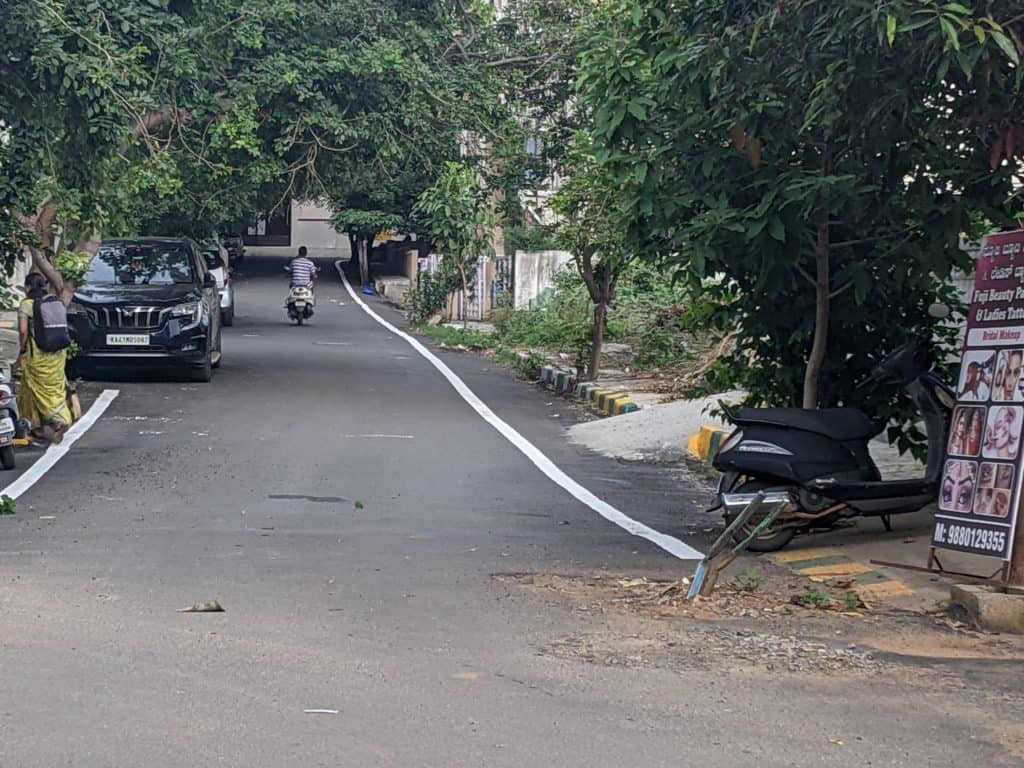
“As per law there is a body that has been set up to coordinate the various utilities, and that is the Metropolitan Planning Committee. This committee is supposed to bring all utility bodies together to make long-term plans. But, no members have been appointed to this committee, and it is not allowed to function,” points out Ashwin.
The Constitution (74th) Amendment Act, 1992, mandated the formation of a planning authority for each metropolitan area tasked with preparing a draft development plan. However, the Karnataka Government formalised the Metropolitan Planning Committee (MPC) for Bangalore only in 2014 due to reluctance of previous governments to shift planning responsibilities from the Bangalore Development Authority (BDA).
The first committee had 30 members including elected corporators of the BBMP, commissioners from other civic agencies and members of the state legislature. However, the number of meetings of the committee have been few and far between in the 8 years of its existence. Currently, with the city gearing up for local body elections, the committee is awaiting members to be constituted from the future elected corporators.
Contractor’s responsibilities in maintaining roads
The committee recommends making contractors responsible to maintain roads they asphalt without potholes for a period of three years. For this it requires that a clause be added in the agreement made with the contractors. The final payment would be made at the end of the maintenance period with proportionate payments being made at the end of each year.
Ashwin points out, “contracts do cover maintenance, but this applies only to major roads. And in Bengaluru, minor roads also end up getting used as major roads due to lack of alternatives. There are other issues also like contractors not being paid on time.”
“Pothole contracting itself is also flawed. We end up waiting for a lot of potholes to form before contracts are awarded to fill them,” he says. “We need to address the issue dynamically rather than waiting for things to get worse before acting. Forward contracts might be a better way to go about this – award contracts in advance to fill potholes so that they can be filled as and when they form,” he adds.
Clearing footpaths and roadways
Similar to the requirement for drain maintenance, the committee recommends that no one be allowed to dump construction materials, debris or anything else on footpaths or roads without prior approval from BBMP. Once again, as much as BBMP needs to step up its enforcement, citizens also need to show better civic sense and avoid taking up road space for private purposes.
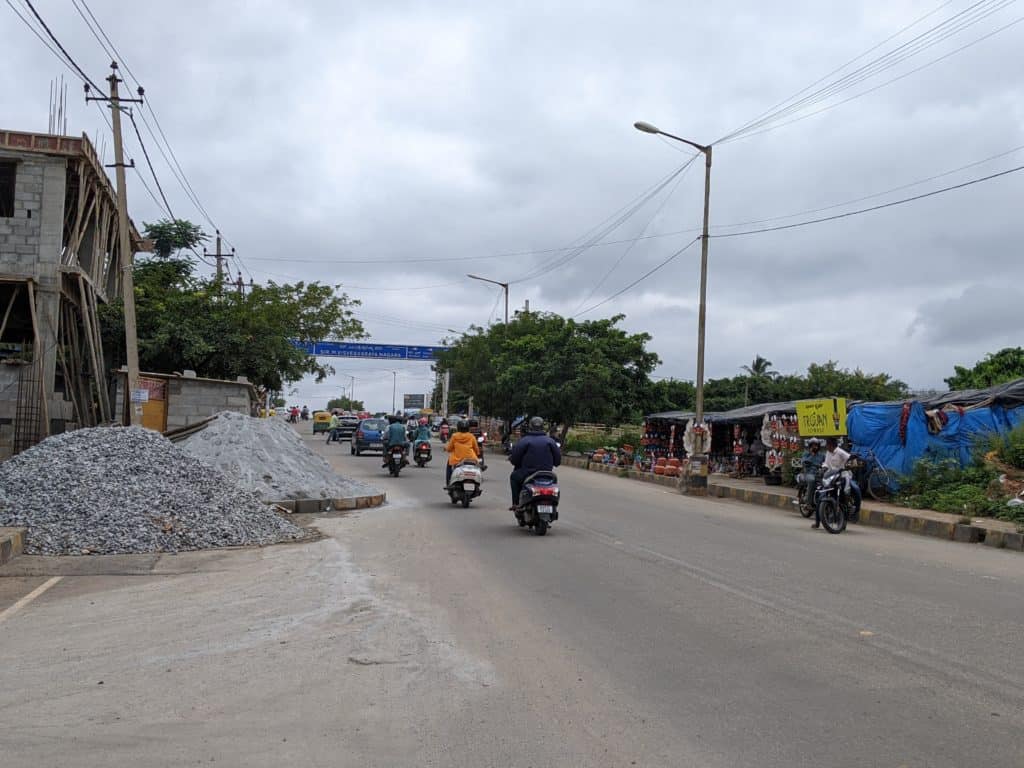
Poor road maintenance — a systemic failure
Once again, ensuring well-maintained good quality roads comes down to the basics of proper road laying and better coordination among various bodies. But as anyone who’s lived in Bengaluru would tell you, coordination among different utility bodies remains only on paper, if at all it does. Residents and private bodies make it worse by cutting roads and not restoring them properly, and dumping of construction material on roads also goes on unchecked.
The guidelines provide strong solutions to address the issues – stronger auditing of road-laying, making contractors more responsible, better coordination among authorities and stricter enforcement on the ground against road-cutting and dumping. There have been examples like TenderSure roads where we have seen good outcomes, but these remain a small fraction of the roads under BBMP. The vast majority of the roads continue to suffer from poor roads due to poor implementation while guidelines and processes remain on paper.
[CitizenMatters reached out to BBMP officials for their comments but could not get any responses.]
Disclosure: Ashwin Mahesh is a trustee at Oorvani Foundation, the publisher of Citizen Matters.
Anyone with a good vocabulary can write an article on “inventing the wheel” to “Alphelion Phenomenon” with pictures dowloaded from various websites and graphs,charts,and tongue in cheek comments about the any goverment agency.While working as an operator of a reasearch nuclear reactor and the day (oops night) when it went “critical” (means to its full designed capacity)the Reactor Superintendent told the staff assembled in the reactor floor appreciating the efforts put in by us, and reminded us to follow the policy of “TAKE CARE OF THE SMALL PROBLEMS, THE BIG ONES WILL STAY AWAY”
Does the author of this article (an engineer himself) mean that Karnataka especially Bengaluru do not have engineers and workmen who do not know how to build a good road and maintain it? We have contractors who built roads, rail roads,runways, dams, canals, in this country and in other developing and developed countries? Right here in Peenya there is an institution who teaches graduate engineers on the subject of “HOW TO BUILD ROADS” and maintain them awarding P.G aptly named “RASTA”.
Have you noticed construction material stocked on top of the SWD’s with no borders which fall in to the drains specially during rains and block them. Have you noticed the roads built do not have “edge stoppers” to prevent sides getting eroded?
Have you noticed the pourakarmikas sweep the mud,leaves, and all the garbage in to storm water drains. Have you noticed there are no roads with out push cart and other vendors parked on the pavement on 24X7 basis and the cutomers on two wheelers riding upto them and park on the road and keep bargaining? Have you noticed BWSSB,BESCOM,BSNL, and all and sundry TELOM operators digging up the road every alternate day? Have you noticed people walking on the road as a group discussing politics or cinema blocking the traffic? One can write pages and pages but what is the remedy? I worked with GREF/BRO during and after the 1961 war, few national high ways in Mahrashtra,UP, and West Bengal,worked for contractor who built rail road from Baghdad to Basra in Iraq,Sheik Syed Road from Dubai to Abu Dhabi, and Emirates highway.
We have no intention of improving our workstyle,skilling our workers and engineers,and public servants.Someone will be writing articles for the next 1000 years, but do nothing to change.